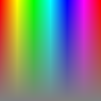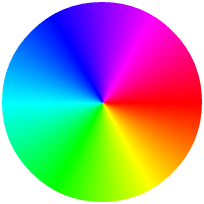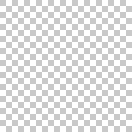Package Exports
- color-ranger
This package does not declare an exports field, so the exports above have been automatically detected and optimized by JSPM instead. If any package subpath is missing, it is recommended to post an issue to the original package (color-ranger) to support the "exports" field. If that is not possible, create a JSPM override to customize the exports field for this package.
Readme

C O L O R − R A N G E R renders a color range for a color in rectangular or polar coordinate system by manipulating _ImageData_’s buffer. It is primarily needed for building color pickers.
- It can be used in a web-worker, document thread or in io.
- You can require renderers selectively.
- See demo, range list and tests.
Install
The best way to use color ranger is to browserify it as a requirement.
Install local package:
$ npm install --save color-rangerBuild bundle:
browserify -r color-ranger > bundle.jsOr if you have your own package, append color-ranger to it:browserify -r color-ranger -r your-dependency your-package.js > bundle.jsInclude the bundle:
<script src="bundle.js"></script>Finally require color-ranger module:
<script>
var ranger = require('color-ranger');
</script>Alternately you can use a standalone version, comprising color-space module. Include color-ranger.js before you’ll use it:
<script src="https://cdn.rawgit.com/dfcreative/color-ranger/master/color-ranger.js"></script>You will get a window.colorRanger object with rendering functions.
Use
First off you need to setup a canvas to make color-ranger work. Look for getting-started example:
//create a canvas
var canvas = document.createElement('canvas');
canvas.width = 50;
canvas.height = 50;
var context = canvas.getContext('2d');
var imageData = context.getImageData(0, 0, canvas.width, canvas.height);
//for the blue color (blue = 255, red = 0, green = 0)
var what = [0, 0, 255];
//to imageData’s buffer
var where = imageData.data;
//considering hue and saturation channels [0,1]
var how = {
space: 'hsl',
channel: [0,1],
min: [0,0],
max: [360,100]
};
//render
imageData.data = colorRanger.renderRect(what, where, how);
//put image data back to canvas
context.putImageData(imageData, 0, 0);
//get a background with the rendered range
document.documentElement.style.background = 'url(' + canvas.toDataURL() + ') 0 0 / cover';You’ll see a range rendered as html background. You can see full list of ranges in tests page.
API


.renderRect(rgb, buffer, options)
.renderPolar(rgb, buffer, options)
Render rectangular or polar range into an imageData’s buffer. Size of the final image is taken such that it fills the whole imageData area.
| Parameter | Type | Description |
|---|---|---|
rgb |
Array | An array of rgb values, representing a color. E. g. [0, 255, 127]. |
buffer |
Uint8ClampedArray | An imageData.data object to which render a range. |
options.space |
string | A color space name for the range taken from the color-space module. E. g. 'hsl'. |
options.channel |
Array | An array of x/y space channel indexes. E. g. [0,2] from 'hsv' is hue and value channels. One of the channels can be omitted, e. g. [null, 1] means render saturation by y-axis. |
options.min, options.max |
Array | Arrays of left and right values for the range, corresponding to the channels in x/y axis. |

.renderGrid(rgbA, rgbB, buffer)
Render a chess grid, useful for transparency grid image rendering. Grid size is automatically figured out from the imageData size.
| Parameter | Type | Description |
|---|---|---|
| rgbA | Array | An rgb values for the "black cell" color. |
| rgbB | Array | An rgb values for the right color. |
| buffer | Uint8ClampedArray | An ImageData object to which render the grid bitmap. |
.getWebworker(spaces)
Return a web-worker able to render any space range for the passed set of spaces. spaces should be a color-space module or it’s custom build. Usually you do this:
var spaces = require('color-space');
//set up and run worker
var rangerWorker = ranger.getWorker(spaces);
//catch worker response
rangerWorker.addEvenListener('message', function(evt){
if (evt.data.id !== 1) return;
//image data buffer is returned as `event.data.data`
imageData.data = evt.data.data;
context.putImageData(imageData, 0, 0);
document.body.style.background = 'url(' + canvas.toDataURL() + ') 0 0 / cover';
});
//send a data to the worker
rangerWorker.postMessage({
rgb: rgbArray,
type: 'polar',
space: 'lab',
channel: [0,1],
max: [360, 100],
min: [0, 100],
data: imageData,
id: 1
});Worker gets all the same parameters as .renderRect or .renderPolar, besides there are two additional options: type and id.
| Parameter | Type | Description |
|---|---|---|
| type | string | A type of a plane to render: 'rect' or 'polar'. |
| id | number | An id of request to identify response. Returns unchanged. |
Contribute
There are some things to do with this lib.
- At first, it needs implementing WebGL shaders version, or combining somehow with color-space-canvas module.
- At second, there’s no HUSL space in webworker available, because HUSL space requires intricated serialization of code for web-worker.
- Also it might need to add a triangular shape rendering.
- It’s a good idea to test server-side rendering as well.
- Asm-js calculation
So please fork, add fixes/features, make a PR. Color-ranger is an unlicensed project in that it is free to use or modify.

